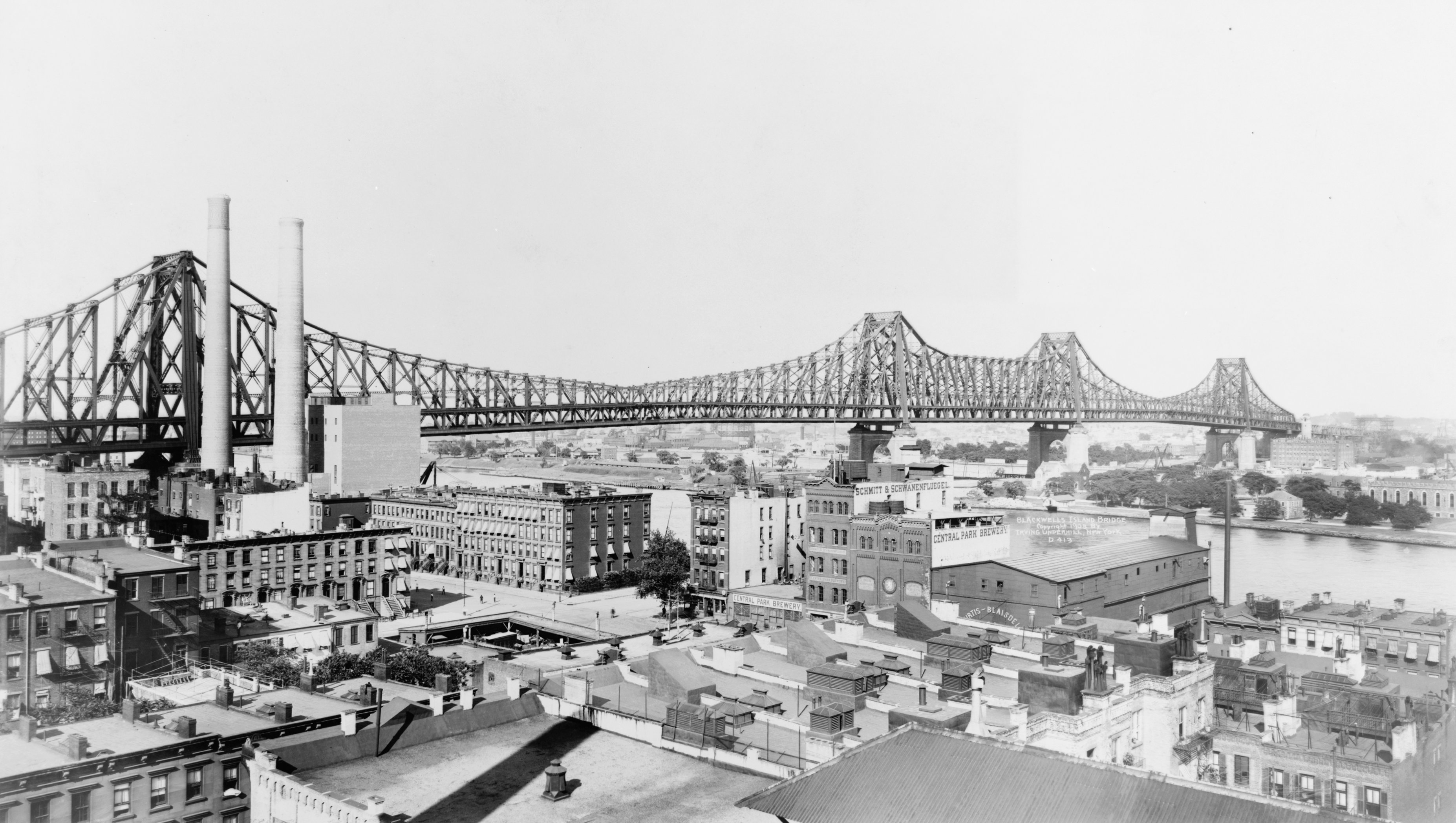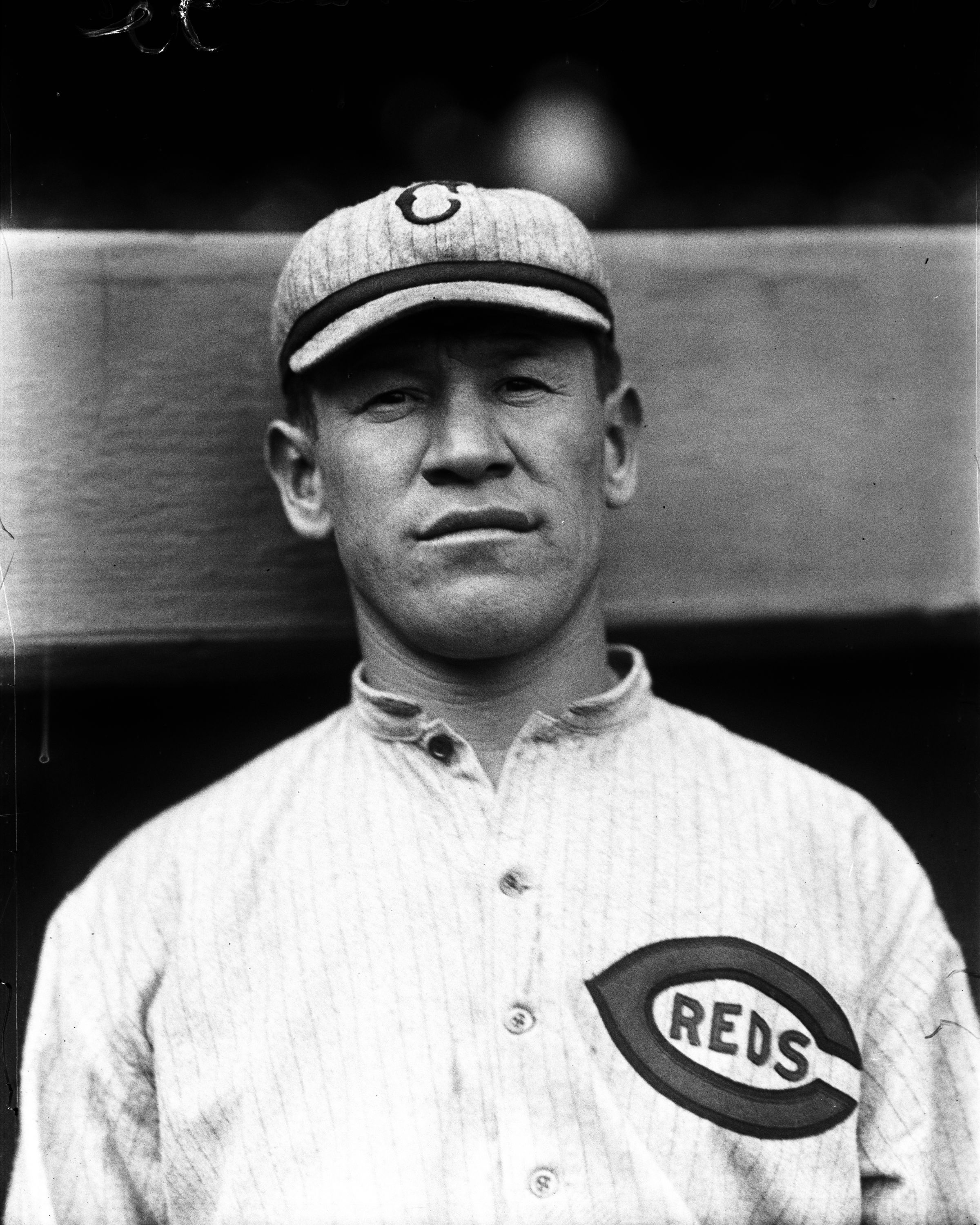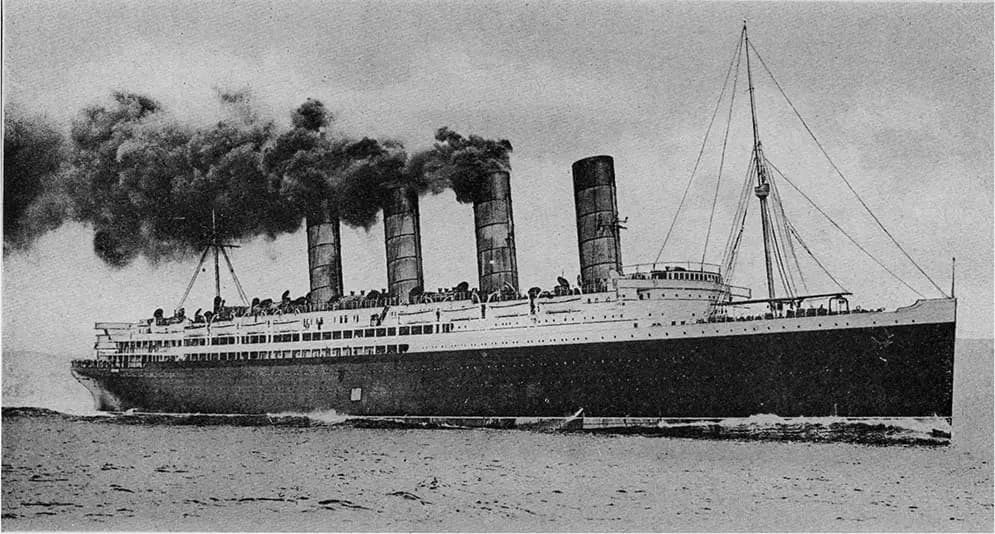1902 :
- Langston Hughes, an American poet, social activist and playwright was born in Joplin, MO.
- China's empress Tzu-hsi forbade binding woman's feet.
- Charles Lindbergh, the first man to fly solo across the Atlantic in 1927, was born in Detroit and grew up in Minnesota.
- Ansel Adams, American photographer and environmentalist, was born in San Francisco.
- Dr. Harvey Cushing performed the first brain surgery in the US. He was known as the "father of modern neurosurgery".
- Two Senators from South Carolina got into a fistfight in the Senate. Both Sen. Benjamin Tillman and Sen. John McLaurin were Democrats, but Tillman got angry when McLaurin continued to vote and back the Republicans who controlled Congress and the White House. McLaurin accused Tillman of "a willful, malicious and deliberate lie". Tillman turned around and punched McLaurin in the jaw. Both Senators were later censured for breech of Senate decorum and behavior unbecoming a senator.
- Denmark became the 1st country to adopt fingerprinting to identify criminals.
- Mt. Pelee volcano, on the French Island of Martinique in the east W. Indies, blew its top and wiped out the town of St. Pierre. A pyroclastic flow killed 29-40 thousand people.
St. Pierre before the eruption...
After the eruption...devastation!
Mt. Pelee erupted violently three time in 1902 (May 8th, May 20th and August 30th) and destroyed the island and killed many!
- Over 125,000 miners in northeastern Pennsylvania called a strike and kept the mines closed all summer. An additional 18,000 bituminous workers struck in sympathy. Owners refused arbitration and Pres. Roosevelt intervened.
- Momotombo, a volcano in Nicaragua, erupted.
- The first Automat restaurant in Philadelphia opened by Horn and Hardart.
- Congress passed the Spooner bill, authorizing a canal to be built across the isthmus of Panama. The US purchased a concession to build Panama canal from French for $40 million. Nine days earlier, Congress agreed that Panama would be the location of the canal.
- Willis Carrier invented modern day air conditioning at the Sackett-Wilhelms Lithographing and Publishing Company in Brooklyn, NY. Carrier’s invention was used primarily to cool machines, not people.
- Edward VII was crowned king of England following the death of his mother, Queen Victoria.
- President Theodore Roosevelt became the first U.S. chief executive to ride in an automobile in Hartford, Conn.
- Fanny Farmer, among the first to emphasize the relationship of diet to health, opened her School of Cookery in Boston. Her company makes the BEST chocolate!!!
- In Japan Mount Izu-Torishima erupted and left 125 people dead.
- US Secret Service agent William Craig was killed when a speeding trolley car rammed into the open-air horse carriage carrying Pres. Theodore Roosevelt in Pittsfield, Mass.
- A long-simmering feud between the Brooks and McFarland clans erupted into a bloody gunfight in the railroad town of Spokogee, Indian Territory, which is now Dustin, Oklahoma. Spokogee had sprung up in the path of the coming Fort Smith & Western Railroad. The area around Spokogee was home to two feuding families, the Brookses and McFarlands. Willis B. Brooks, 48, was a well-known inhabitant of the Dogwood Settlement and one of the toughest men to be found in Indian Territory. He was a gunfighter from Alabama. Jim McFarland, his chief adversary, had the reputation of being an outlaw and a killer. While the railroad inched its way toward Spokogee, the long-simmering feud between the warring families heated up and then erupted into a classic Western gunfight, settled with gun smoke, blood and bullets!
- Monet made his painting "Waterloo Bridge."
-
- President Theodore Roosevelt met with miners and coal field operators in an attempt to settle the anthracite coal strike, then in its fifth month. The country relied on coal to power commerce and industry and anthracite or "hard coal" was essential for domestic heating. Pennsylvania miners had left the anthracite fields demanding wage increases, union recognition, and an eight-hour workday. As winter approached, public anxiety about fuel shortages and the rising cost of all coal pushed Roosevelt to take unprecedented action. The meeting failed to resolve differences. A presidential commission awarded the workers a 10% wage increase and a shorter work week.
- Santa Maria, Guatemala, was hit by an earthquake and about 6,000 died.
- A cartoon appeared in the Washington Star, prompting the Teddy Bear Craze, after President Teddy Roosevelt refused to kill a captive bear tied up for him to shoot during a hunting trip to Mississippi. When his hunting party couldn't find a bear in the wild to hunt, his hunting guide captured a black bear and tied it to a tree to kill, but President Roosevelt refused. He was praised, but also ridiculed by the public for his decision. Brooklyn toymaker Morris Michton named the teddy bear after Teddy Roosevelt.
- Paleontologist Barnum Brown is in Montana working at the site near the town of Jordan, where he recently discovered remnants of a dinosaur to be known as Tyrannosaurus Rex.
- British, German and Italian governments want Venezuelans to pay debts owed Europeans. Their warships arrive in Venezuelan waters to impose a naval blockade.
11/10/15
Year 1909
- A Polar exploration team led by Ernest Shackleton reached 88 degrees, 23 minutes south longitude, 162 degrees east latitude. They were 97 nautical miles short of the South Pole, but the weather is too severe to continue.
- In San Francisco police arrested Miss Frances Smith, attired in a jaunty sailor costume, and Miss May Burke as they strolled down Montgomery street. Smith was charged with masquerading in male attire and Burke was charged with vagrancy.
- The steamship Florida, with 850 Italian immigrant passengers, collided off Long Island with the luxury liner Republic, a steamship under Captain Sealby of the White Star Line. Jack Binns, a Marconi telegraph operator on the Republic, sent and received messages for hours into the crises and helped save 550 Republic passengers plus 192 crew. Only 6 people died in the collision.
- The United States ended direct control over Cuba.
- California law segregated Japanese schoolchildren.
- Pres. Theodore Roosevelt signed Executive Order 1019 which established a bird sanctuary of some of the Northwestern Hawaiian Islands.
- In San Francisco Louis’s Fashion Restaurant opened at 73 Sutter St. It had begun operations under Louis Besozzi in 1898, but was destroyed in the 1906 earthquake. The new resaturant came to be called The Fly Trap due to fly paper rolls hung from the ceiling. Operations continued to 1963.
- The National Association for the Advancement of Colored People (NAACP) was founded by 60 people gathered in NYC to discuss recent race riots and how to fight discrimination. They were initially known as the National Negro committee and signed a proclamation known as “The Call.” It was based on the Niagara movement of 1905. Mary White Ovington was one of the founders.
- The SF Citizens Health Committee declared SF free of bubonic plague.
- Apache chief Geronimo died of pneumonia at age 80, while still in captivity at Fort Sill, Okla.
- Pres. Theodore Roosevelt established the Farallon Islands, 28 miles off the coast of San Francisco, as a wildlife refuge.
- The earliest Women’s Day observance, organized by the Socialist Party of America, was held in NYC. Some 15,000 women marched demanding shorter hours, better pay and voting rights.
- 1st US university school of nursing established, University of Minnesota.
- An F4 tornado hit Brinkley, Arkansas, killing 49 people. It was but one of 7 to touch down on the state this day.
- President Taft was inaugurated as 27th President during a 10" snowstorm.
- Einar Dessau of Denmark used a short-wave transmitter to converse with a government radio post about six miles away in what is believed to have been the first broadcast by a "ham" operator.
- British Lt. Shackleton found the magnetic South Pole.
- The Queensboro Bridge, the first double decker bridge, opened and linked the New York boroughs of Manhattan and Queens.
- Explorers Robert E. Peary, Matthew A. Henson and four Inuits became the first men to reach the North Pole along with 4 Eskimos. Peary used Ellesmere Island as a base for his expedition to the North Pole. The north coast of Ellesmere lies just 480 miles from the Pole. He was accompanied by Matthew Henson, an African-American, who had spent 18 years in the Arctic with Peary. The claim was disputed by skeptics and in 1988 the original navigational records were uncovered from the dog-sled voyage indicating that Peary probably never got closer than 121 miles from the North Pole. In 1989 the Navigation Foundation upheld that Peary reached the North Pole.
- Joan of Arc was declared a saint.
- The new Orpheum Theater opened in San Francisco, Ca.
- he Texas Sugar Land prison facility began operations. It was basically a plantation owned by Imperial Sugar which leased inmate workers from the state.
- Walter Reed Hospital opened in Washington DC as an 80-bed Army medical center. It closed in 2011 and operations were moved to facilities in Maryland and Virginia.
- An SOS signal was transmitted for the first time in an emergency as the Cunard liner SS Slavonia was wrecked off the Azores.
- Jim Thorpe made his pro baseball pitching debut for Rocky Mount (ECL) with a 4-2 win. This later caused him to forfeit his Olympic medals.
- Actor Errol Flynn, who portrayed Robin Hood in movies, was born.
- A Ford Model T crossed the finish line in the NYC to Seattle Automobile Race after 22 days and 55 minutes to claim the Guggenheim Cup and a $2,000 first prize. A Shamut came in 17 hours later to win the 2nd-place prize of $1500. An Acme car came in on June 29 to claim a $1000 3rd prize. The Ford was later disqualified for having switched engines enroute.
- Fritz Haber and Carl Bosch of the BASF company succeeded in combining nitrogen from the air with hydrogen from coal to make ammonia.
- French aviator Louis Bleriot made the first crossing of the English Channel from Calais to the grounds of Dover Castle in a powered aircraft, winning a £1,000 prize offered by the London Daily Mail. Piloting his Type XI monoplane at an average of 39 miles per hour, Blériot made the trip of 23.2 miles in just under 36 minutes.
- Imprisoned English suffragette Marion Dunlop refused to eat. Prison officials, afraid that she might die and become a martyr to her cause, released her. Soon after, so many suffragettes had adopted the same tactics that prison authorities began force-feeding the women. Mary Leigh told her own story of being force-fed in the September 1909 edition of The Suffragette. The hunger strike was one of the most formidable weapons in the arsenal of suffragettes in Britain and America.
- The 1st Lincoln head pennies were minted. It was 95% copper and was the first US coin to depict the likeness of a president.
- The Wright Flyer was formally accepted by the US Army in exchange for $30,000. It was designated Signal Corps Airplane No. 1, the world’s first military airplane.
- Baseball umpire Tim Hurst instigated a riot by spitting at A's 2nd baseman Eddie Collins, who had questioned a call. This lead to Hurst's banishment.
- On August 7th, Alice Huyler Ramsey arrived in San Francisco on a ferry boat after driving a 1909 Maxwell Model DA across the country. She had left New York on June 9 on the first ever cross-country trip by a woman.
- The SOS distress signal was first used by an American ship, the Arapahoe, off Cape Hatteras, N.C.
- The Cunard liner "Lusitania" crossed the Atlantic in four days, 15 hours and 52 minutes.
- In San Francisco a ban on cows went into effect, except for a narrow district that was set apart for handling cattle to be slaughtered. A new ordnance made it unlawful to keep more than 2 cows and provided that when 2 cows are kept within city limits, at least an acre of land must be provided for their pasturage.
- Construction began on the naval base at Pearl Harbor in Hawaii.
- In Pennsylvania the Cherry Mine disaster killed 259 men and boys.
- In San Francisco Yee Yup was shot down by Gee Gong, a former employee in the laundry of the dead man. The On Yicks have now killed 4 members of the Yee family, while the Yee family have but one death to their credit. It was feared that the murder would escalate family rivalries in Chinatown.
- US invaded Nicaragua and later overthrew Pres Zelaya.
- The Wright brothers formed a corporation for the commercial manufacture of airplanes. Cornelius Vanderbilt and other financiers backed them with one million dollars.
- Some 15,000 shirtwaist workers walked out of the factories in NYC, with more joining the strike the following day. The strike lasted until February 1910 and ended in a "Protocal of peace" which allowed the strikers to go back to work and met the demands of the workers, which included better pay, shorter hours, and equal treatment of workers who were in the union and workers who were not.
- George Taylor made the first manned glider flight in Australia in a glider that he designed himself.
- Red Cloud, Sioux Indian chief, died.






No comments:
Post a Comment